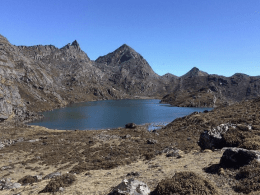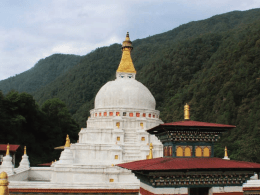Nestled in the far western corner of Bhutan, Haa is one of the kingdom’s least explored districts, often overshadowed by its more frequented neighbors Paro and Thimphu. Yet for travelers seeking an authentic Himalayan experience—where tradition endures, landscapes awe, and tranquility permeates the air—Haa reveals itself as a rare gem. Known locally as “Hidden-Land Rice Valley” (Haso), Haa remained largely closed to outsiders until 2002, preserving much of its cultural heritage and rustic charm. Today, it offers a window into Bhutan’s pastoral heart, where timeless customs meet dramatic natural beauty.
Haa Dzong and Wangchulo Dzong
Begin your journey at Wangchulo Dzong, a fortress built in 1915 that now houses the Royal Bhutan Army. Though visitors cannot access the interiors, its towering whitewashed walls and strategic perch embody Bhutan’s unique dzong architecture.
A stroll through Haa town, with its modest shops and traditional houses, quickly reveals the district’s quiet dignity. The smaller Haa Dzong, perched above the valley, offers a glimpse into local religious life and a sweeping view of the surroundings.
The Valley of Three Brothers
One of Haa’s most celebrated features is its sacred valley of three hills, believed in local lore to resemble a raven, a serpent, and a lion—symbols of Bhutan’s guardian deities. This mystical geography lends Haa its spiritual gravitas, and the hills themselves form the backdrop of many local rituals. For those with an interest in folklore, this legend gives depth to the landscapes unfolding before your eyes.
Lhakhang Karpo and Lhakhang Nagpo
No visit is complete without stepping into Lhakhang Karpo (White Temple) and Lhakhang Nagpo (Black Temple), two of Bhutan’s most sacred monasteries. Built in the 7th century by Tibetan King Songtsen Gampo, they are said to have been founded when two pigeons—one black and one white—guided the king to the sites.
Lhakhang Karpo, recently restored, glimmers in white elegance and serves as the district’s spiritual heart. Just a short walk away, Lhakhang Nagpo stands in striking contrast with its austere black walls and an aura of quiet mystery.
Haa Summer Festival
If your travels coincide with July, the Haa Summer Festival is a cultural spectacle not to miss. Villagers gather in traditional attire, showcasing age-old sports like archery and khuru (dart throwing), vibrant folk dances, and feasts of local cuisine. The festival is a celebration of pastoral life, offering visitors an intimate glimpse into the rhythms of the valley.
Outdoor Adventures
For trekkers and nature lovers, Haa’s rugged terrain is irresistible. The legendary Chele La Pass, one of Bhutan’s highest motorable passes at 3,988 meters, connects Haa to Paro and provides jaw-dropping views of Mount Jomolhari and even the snow-clad peaks of Tibet on a clear day. From here, short hikes reveal fields of wildflowers in summer and fluttering prayer flags that color the mountain breeze.
The Haa Panorama Trail is a rewarding trek for those wanting to immerse in pastoral scenery, passing through yak herding camps, alpine meadows, and rhododendron forests. For the more adventurous, the Sagala Trek offers two to three days of hiking, linking Haa to Paro through stunning high-altitude landscapes.
Cultural Immersion and Local Flavors
Traveling through Haa also means tasting its distinct culinary traditions. The valley is known for its hoentay, buckwheat dumplings stuffed with spinach, cottage cheese, and turnip leaves, usually served with a drizzle of butter and a spicy ezay. Visitors staying in homestays can join families in preparing these delicacies, sip on salty butter tea, and learn firsthand about the challenges and joys of farming life in high altitudes.
A Journey Back in Time
Haa is not about grand palaces or bustling markets—it is about simplicity, quiet landscapes, and encounters with people whose lives remain deeply intertwined with nature and spirituality. Whether you are meditating in a centuries-old temple, hiking across windswept passes, or sharing stories over a hearth in a farmhouse, the valley invites you to slow down and rediscover the essence of Bhutanese life.
For travelers who venture here, Haa is more than a destination. It is a retreat into authenticity, a place where the Himalayas whisper their oldest stories, and where visitors leave with not just photographs but an imprint of serenity that lingers long after the journey ends.








